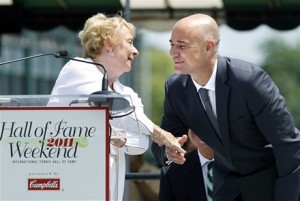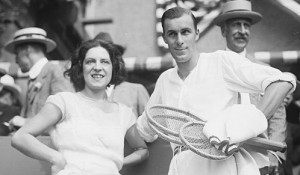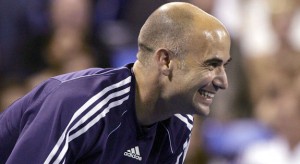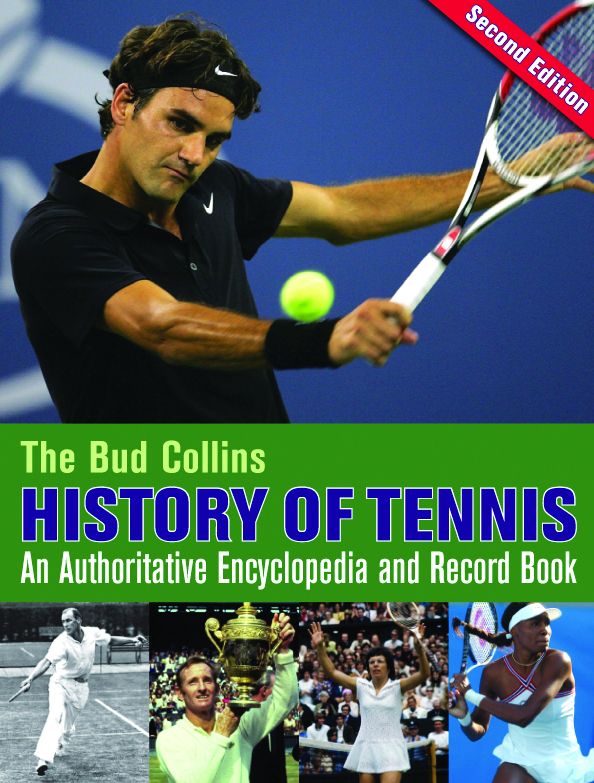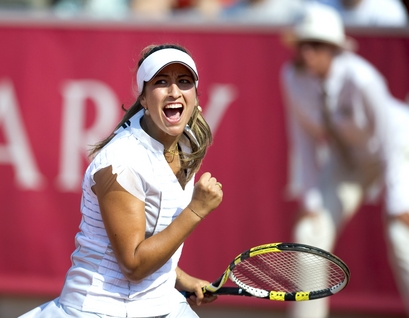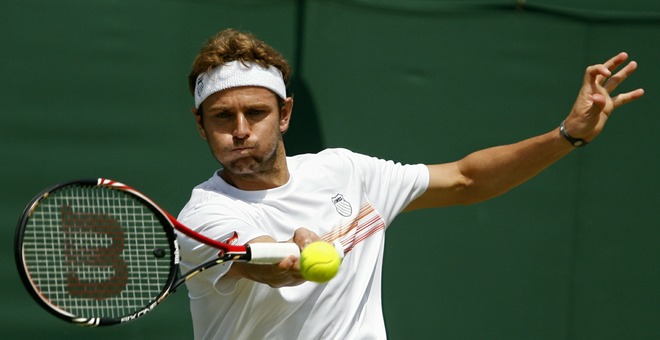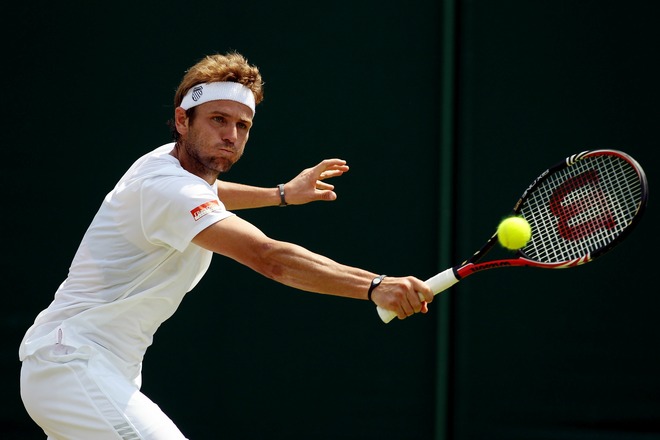Talk of a potential men’s player boycott against the Grand Slam tournaments heated up during the 2012 Australian Open. A boycott of a major tournament would be the first since the infamous men’s boycott at Wimbledon in 1973 that helped forge the ATP (Association of Tennis Professionals). Bud Collins, the Hall of Fame tennis journalist, historian and personality, reviews this dramatic political episode from tennis in his famed book THE BUD COLLINS HISTORY OF TENNIS ($35.95, New Chapter Press, Order Here: http://www.amazon.com/Bud-
***
The already turbulent political waters in tennis were roiled further by formation of a league called World Team Tennis, which planned to start intercity team competition using a unique, Americanized format in 1974. Dennis Murphy, who had helped found the American Basketball Association and the World Hockey Association, envisioned 16 teams with six players apiece (men and women) under contract competing in a May through-August season.
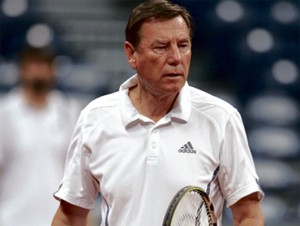
Jack Kramer and the ATP board came out staunchly opposed to WTT, saying it would harm the long-range players’ interest in a healthy worldwide tournament circuit. But even as discussions between the ILTF and ATP about team tennis were scheduled, a more immediate problem arose. When ATP member Pilic was suspended by the Yugoslav Tennis Federation for failing to participate in a Davis Cup series in New Zealand, to which he had allegedly committed himself, ATP members objected. They protested that this was precisely the sort of arbitrary disciplinary power by a national association that the ATP was meant to counteract. An ATP threat to withdraw all its 70 members from the French Open if Pilic was barred from the tournament was averted by a delaying tactic, an appeal hearing before the ILTF Emergency Committee, which reduced Pilic’s suspension from three months to one month.
This did not satisfy the ATP board, which contended that only their own association should have disciplinary authority over players. Many also felt that the one month suspension, which included Wimbledon, was devised by the ILTF to demonstrate its muscle, believing the players would never support a boycott of the world’s premier tournament. Thus “The Pilic Affair” became a test of the will and organization of the new association. Many ATP leaders felt that if they gave in on this first showdown, they would never be strong, whereas if they held firm and proved to the ILTF that even Wimbledon was not sacred, the ATP’s unity and power would never be doubted in the future.
After days of tortuous meetings and attempts to find compromises, including the ATP’s seeking an injunction in Britain’s High Court forcing the All England Club to accept Pilic’s entry, ATP members voted to withdraw en masse if Pilic were barred from Wimbledon. Seventy-nine men did withdraw their entries, including 13 of the original 16 seeds. Nastase, Englishman Roger Taylor and Australian Ray Keldie were the only members who did not withdraw. (They were later fined by the ATP.) Amid ferocious English press criticism and bitterness, the tournament was played with a second-rate men’s field. The British public, taking up the press crusade that “Wimbledon is bigger than a few spoiled players,” turned out in near-record numbers. They made heroes of Nastase, Taylor and such attractive newcomers as Connors and Swedish teen-ager Borg, who, in long blond locks, became the immediate heartthrob of squealing British schoolgirls.
Borg, destined to become the “Angelic Assassin” of Centre Court with five straight titles (1976-80), made his debut on that sacred sod memorable for the fact that he and Indian Premjit Lall engaged in the longest singles tie-breaker in a major championship. As it grew and grew and grew like Jack’s beanstalk, to a 38th point climax, the scene was punctuated by much laughter from spectators. It was only the beginning of Wimbledon’s second year of tie-breaking, and nobody had witnessed such an elongated passage. Borg, Lall and court officials, especially the traveling service line judge, shared the confusion. At last, after Lall had saved seven match points and had six set points himself, it ended at 20-18, and Borg had his first Wimbledon match win, 6-3, 6-4, 9-8 (20-18). He would go on to the quarterfinals, losing to Taylor 6-1, 6-8, 3-6, 6-3, 7-5.
Nastase, an overwhelming favorite, was beaten at the end of the first week by constantly attacking Alex “Sandy” Mayer, 6-4, 8-6, 6-8, 6-4. Sandy went on to reach the semifinals, losing to the Soviet Georgian Alex Metreveli,6-3, 3-6, 6-3, 6-4. Kodes became the first Czech champ since expatriate Jaroslav Drobny in 1954, beating Metreveli, 6-1, 9-8 (7-5), 6-3, in a predictably uninspiring final. Left-handed Yorkshireman Taylor, conqueror of Laver in 1970, was probably the best equipped to win his semifinal, but the pressure on a homeboy to end the interminable post-Fred Perry drought was fiercer than ever. Not only did the Brits yearn for a champ of their own but they wanted Roger to upstage the boycott Added pressure of disapproval came from his lodge brothers, whom he didn’t join in the walkout. He wasn’t quite up to it, falling to Kodes in five sets, 8-9, 9-7, 5-7, 6-4, 7-5. Kodes’ quarterfinal was tight, too, 6-4, 3-6, 4-6, 6-3, 7-5, over tall and stylish Indian 19-year-old Vijay Amritraj, who nearly served-and-volleyed him off the lawn. Connors, beaten by Metreveli, 8-6, 6-2, 5-7, 6-4, paired with Nastase as they clowned their way through five sets to win the doubles title over Australians John Cooper (younger brother of 1958 champ Ashley) and ex-champ, 39-year-old Neale Fraser, 3-6, 6-3, 6-4, 8-9 (3-7), 6-1.

